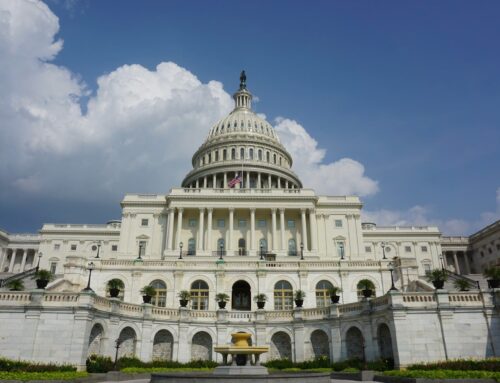Everybody look at their calendar. No, not this year’s calendar, last year’s. Because Fiscal Year 2022 started on October 1, 2021. And that’s when the FY22 appropriations bills were supposed to be finalized. (The last time all the spending bills were completed before the start of the fiscal year was 1997, while the last time they were done individually and on time – so called regular order – was in 1994.) Again, referring to the calendar from the local seed company that is hanging on your wall, that would be five months ago. In other words, for five full months the federal government limped along under a so-called Continuing Resolution (CR) to fund government at FY21 levels.
No more.
With no time to actually read and understand what was in the 2,741-page Omnibus Appropriations bill (that’s just the bill, not to mention 2,000+ in other supporting documents), Congress funded the entire federal government before the last CR was set to expire (midnight March 11). The total value of the Omnibus is $1.5 trillion. That’s a lot of money to vote on without giving rank and file lawmakers much time to review the details of both the money and hundreds of policy riders, to boot. And, we’re only a few weeks out from the President releasing the Fiscal Year 2023 budget request!
This is no way to run a railroad, or a federal government.
And hey – earmarks are back – err Community Project Funding – not earmarks. But TCS got put out of the database business because taxpayers got the transparent data on earmarks they were promised: downloadable, sortable, searchable databases listing projects, sponsors, beneficiaries and tax dollars directed to each project, right?
WRONG! The earmark disclosures when first released were a mess. There were PDF tables for each bill that were blurry and required squinting to understand. (Cleaner files are now available). We’ve already found numerous projects not requested by the President, but not disclosed as earmarks. For example, projects from the “Unfunded Priorities Lists” (UPLs) for military construction and family housing were slipped in to sweeten the pot. That’s $4.3 billion worth of construction projects that weren’t considered high enough priorities for the Pentagon to squeeze into its more than $700 billion budget request for FY22.
Bad process. Bad results. It shouldn’t be this hard. The House and Senate appropriations committees were pretty transparent about earmark requests, providing links to member websites and disclosing what made it into the committee-passed versions of the bills. The House even provided a database, not just a PDF. But all that falls to the wayside at the end.
Okay now we’ve gotten over Lucy (Appropriations Committee) pulling the football (true earmark transparency) from Charlie (ugh, that’s us) again, let’s dig in.
You can follow along on our rolling blog analysis of the whole bill here.
A few good things so far?
- The Internal Revenue Service got a funding bump – you may not like them but an adequately funded IRS answers help lines, processes refunds faster, and makes the system fairer.
- Some of the COVID-19 funding is offset (screech as the needle goes across the record), well, the COVID supplemental part was pulled. Originally all $15.6 billion in proposed spending was “paid-for” by redirecting unspent “emergency” COVID-related funds from previous bills. After many Democrats balked at losing $7 billion in unspent state and local funds, leadership produced a bill cutting that section, but still rescinding $8 billion in other accounts. Still no dice. So, the bill’s table of contents shows Division M – Covid Supplemental Appropriations Act, 2022, but the text is gone (for now).
- But hey, the Congressional office allowance was increased. We have consistently pointed out that lawmakers have to be able to pay staff at a level to attract and retain talent. These are the people writing the laws and working with constituents.
Let’s be clear, there are many important areas of government being funded. And, getting agencies (finally) their annual budget levels is important. In some years, agencies have been funded by CRs for the full year. That’s legislative malpractice of the highest order.
Of course, a bill of this size is bound to have (several) items to frown at, however. Even in our fiscal crisis we’re still funding special interests and pet projects. A few examples? $4.2 million for the US Sheep Experiment Station in Idaho. $10 million to the Sugarcane Research Unit in Louisiana. Other provisions will waste taxpayer dollars and resources on false climate solutions such as carbon capture and storage (CCS) and woody biomass.
All right, we’ve got to go back to work. There’s still thousands of pages to review and recommendations to make. Time to pull the green eyeshades back down, bring the calculator out and fire up Excel. Hope you have a good weekend.
- TCS In-house designed image











Get Social